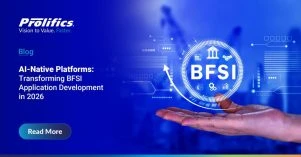The Growing Data Science Talent Gap
The demand for skilled data scientists continues to outpace supply. Across industries, organizations are struggling to find professionals who can turn vast amounts of data into actionable insights.
This shortage makes building and maintaining data science capabilities both expensive and time-consuming. Yet, the need for data science has never been greater—it drives predictive modeling, improves customer experiences, and enhances operational efficiency.
Without access to qualified talent, many businesses face project delays and missed opportunities, creating frustration and hindering innovation.
Why the Skills Gap Exists
Several factors contribute to the ongoing talent shortage in data science:
- Educational limitations: Few institutions offer comprehensive data science programs.
- Rapid evolution: The field changes so quickly that continuous learning is essential.
- High competition: Top talent is often concentrated in large tech companies.
As a result, many businesses face a choice—compete for scarce experts or slow down their data initiatives.
However, there’s a smarter, scalable alternative: adopting turn-key solutions that democratize access to machine learning and analytics.
A Strategic Solution for Unlocking Data Science Resources
Organizations no longer have to rely solely on hiring new talent to achieve advanced analytics goals. Instead, they can leverage automation, AI, and pre-built frameworks to empower existing teams.
A turn-key machine learning solution bridges the skills gap by enabling non-experts to build, train, and deploy predictive models without deep coding or mathematical expertise.
This approach enhances productivity, reduces dependency on specialized talent, and allows organizations to scale their data capabilities faster.
The Prolifics Innovation Center: A Turn-Key Data Science Solution
The Prolifics Innovation Center has developed a comprehensive, ready-to-use machine learning platform that simplifies and accelerates model development.
Key Benefits
- Automated Model Selection: Evaluates thousands of algorithms in minutes.
- Time Savings: Reduces manual experimentation for data scientists.
- Accessibility: Makes advanced analytics usable across departments.
Importantly, this isn’t about replacing data scientists—it’s about augmenting their capabilities. By automating repetitive tasks, teams can focus on high-value strategy, model optimization, and innovation.
Real-World Use Cases of Turn-Key Data Science
Data science drives measurable business impact across industries. The Prolifics platform is especially effective in:
Retail Enterprises
Predictive analytics models identify high-value customers, improve cross-selling, and boost revenue through personalized marketing.
Utility Companies
Machine learning predicts equipment failures before they occur, preventing outages, improving reliability, and reducing maintenance costs.
Other Industries
From healthcare to finance, organizations can use predictive analytics to optimize operations, detect anomalies, and enhance customer engagement.
Wherever there’s data, there’s potential—and automation makes it easier to unlock.
Enhancing Your Data Science Strategy
To maximize the value of data initiatives, combine technology with strategic planning and workforce development.
1. Invest in a Data Science Roadmap
Define clear goals, prioritize key projects, and align initiatives with business outcomes.
A roadmap ensures your data investments are measurable, sustainable, and results-driven.
2. Upskill Your Existing Teams
Empower employees with basic data literacy. Offer online training, internal sessions, or mentorship programs to foster a data-driven culture.
3. Embrace a Hybrid Human–AI Approach
Combine automation with human insight. Let technology handle data processing while experts focus on interpretation and innovation.
This hybrid model enhances efficiency, accuracy, and adaptability—key ingredients for long-term success.
Conclusion
The shortage of data science professionals doesn’t have to limit innovation. With turn-key machine learning platforms, organizations can bridge the skills gap, accelerate insights, and empower teams to make smarter decisions.
By blending human expertise with automated intelligence, businesses gain the agility needed to compete in an increasingly data-driven world.
To learn more about how Data Science and Machine Learning can drive your business forward, contact solutions@prolifics.com.
About the Authors
Michael Gonzalez – Lead Data Scientist
Dr. Michael L. Gonzales, Ph.D., brings over 30 years of experience in data analytics, architecture, and competitive intelligence. His research focuses on analytics at scale and IT-enabled business transformation.
Wayne Scott – Head of Enterprise Analytics
Wayne Scott leads Enterprise Analytics, overseeing data visualization, advanced analytics, NLP, and data engineering initiatives. With 16+ years of experience, he specializes in designing and delivering high-impact data strategies.




